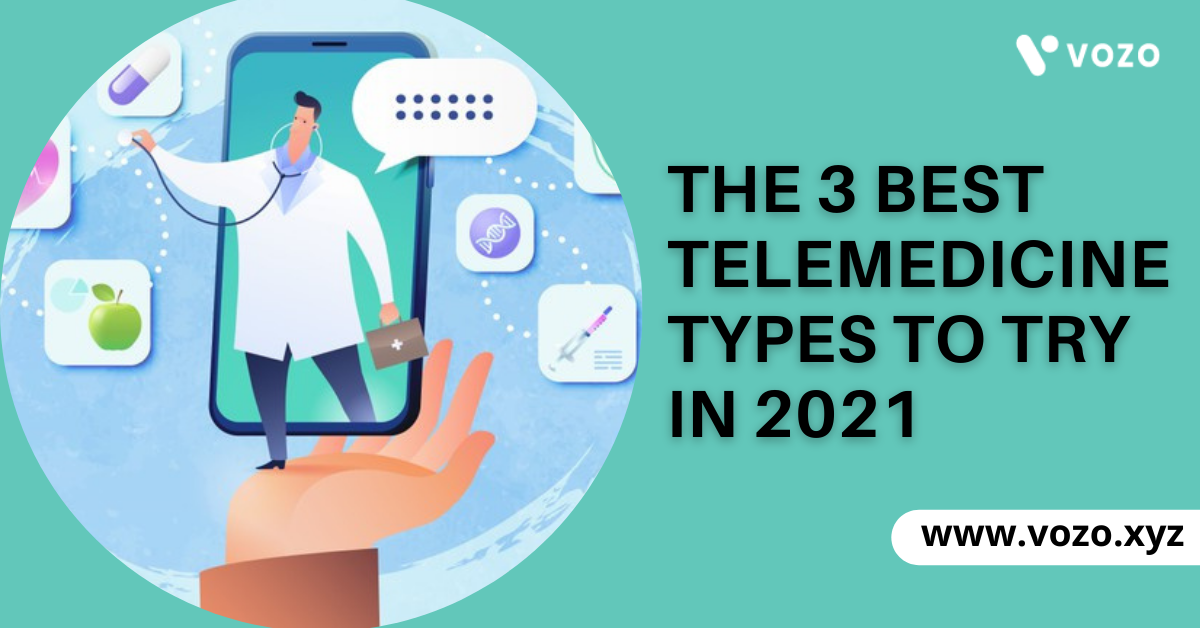The 3 Best Telemedicine Types To Try In 2021
The adoption rate of telemedicine has improved tremendously in recent times. As all the healthcare practices are started adapting to this advanced technology for healthcare access, practices and patients should be aware of this technology and learn how to engage with it. So, it’s very important to know about the telemedicine types which work for your practice in 2021.
What Is Telemedicine?
Many of us have a big question about what is telemedicine definition. Telemedicine is the practice of using communication technology to connect healthcare providers with their patients remotely. Here the entire healthcare access is achieved through data transfer and communications. If you are new to this, let’s explore the types of telemedicine out there.
1. Real-Time Telemedicine
Most people expect to be real-time telemedicine, as it enables medical providers and patients to connect remotely in real-time. This type of telemedicine uses two-way communication tools such as live chat, video conferencing, or phone calls to perform tests as if the physician and patient were in the same room.
In this way, the real-time telemedicine workflow makes it easy to perform doctor-patient visits anytime and anywhere. Basic visual examinations, assessments of medical history, psychiatric evaluations, and even ophthalmic tests can all be done via live telemedicine.
The great benefit of real-time telemedicine is how it maintains the physician relationship with patients without traveling. There is no need for physicians to leave their practice, and no need for patients to leave their homes to access healthcare.
RELATED: Top 5 Tips To Build A HIPAA Compliant Telemedicine
2. Remote Patient Monitoring
The next common type of telemedicine is remote patient monitoring, which permits clinical suppliers to track and screen patients’ wellbeing information in good ways. This remote monitoring telemedicine is frequently used to monitor patients with persistent conditions in their homes, so those patients don’t need to make everyday trips to see a doctor face to face.
Remote patient monitoring tools limitlessly improve the patient experience since they can gather patient wellbeing data while the patient is serenely in their own home and afterward send that data to clinical suppliers. From that point, healthcare providers can watch out for patients’ advance and get cautions if any details show declining conditions.
Otherwise called self-monitoring or self-testing, remote monitoring uses a scope of advanced technological gadgets to screen the wellbeing and clinical indications of a patient distantly. This is widely utilized in the administration of constant illnesses like cardiovascular sickness, diabetes mellitus, and asthma.
Some of the common benefits related to remote patient monitoring include more frequent monitoring, cost-effectiveness, and greater patient satisfaction. The only complicated thing in this type of telemedicine is that tests led by the actual patients might be wrong; notwithstanding, the results are for the most part thought to be like proficient patient tests.
RELATED: 6 Dark Secrets Behind The Transition To Telemedicine
3. Store And Forward
Store-and-forward telemedicine, once in a while called asynchronous, is something contrary to continuous telemedicine in that it permits patient information to be assembled and afterward safely moved to a safe cloud-based EHR telemedicine platform that other approved users would then be able to access whenever.
Store-and-forward telemedicine workflow makes patient records and clinical information more open across significant distances. A wide range of helpful clinical information (for example clinical imaging, test results, bio-signals) can be procured and communicated across immense distances. The greatest benefit of this type of telemedicine is that it doesn’t need the concurrent consideration of conveying and accepting gatherings. A field professional, caregiver, or expert can gather the vital information, transfer it, and leave it for definite inspection by another provider sometime in the not too distant future.
Pathology, radiology, dermatology, and numerous other particular clinical fields depend on this telemedicine type consistently. Numerous frameworks exist to help coordinate this kind of data into a solitary durable record for an individual patient. Even though not all electronic health record frameworks are interoperable, widespread telemedicine use helps push the practice to improve stages that can coordinate and impart.
Final Thoughts
Telemedicine is an extremely fastest-growing field that has altered the face of healthcare in a short amount of time. With the adoption of EHR telemedicine, it is now easy and possible for healthcare professionals to interact with patients in their places. With a clear understanding of these three types of telemedicine, you can now easily able to determine which the right fit for your practices is.
If you want to learn more about telemedicine software and which platforms will work for you, schedule a free demo with Vozo to know about telemedicine software options that work best for your practice.
About the author

With more than 4 years of experience in the dynamic healthcare technology landscape, Sid specializes in crafting compelling content on topics including EHR/EMR, patient portals, healthcare automation, remote patient monitoring, and health information exchange. His expertise lies in translating cutting-edge innovations and intricate topics into engaging narratives that resonate with diverse audiences.













